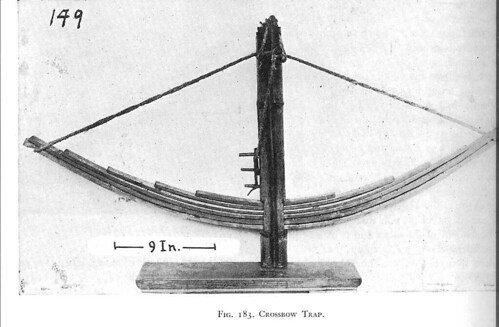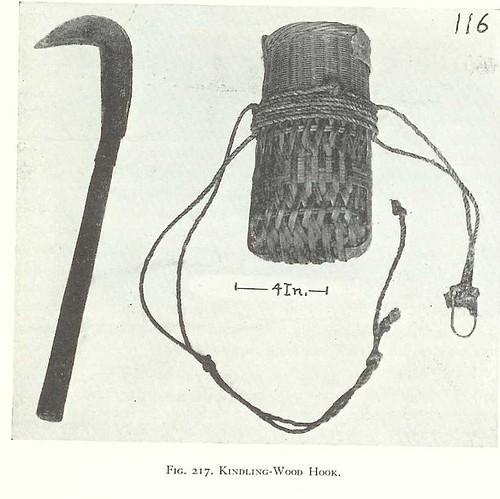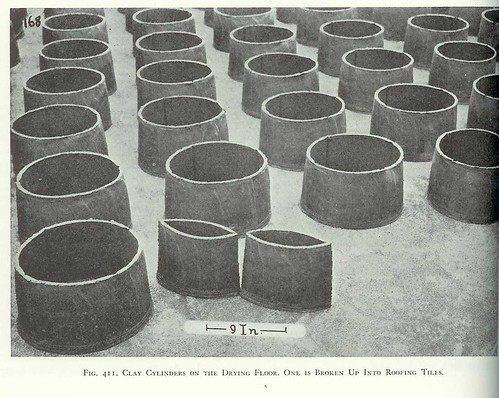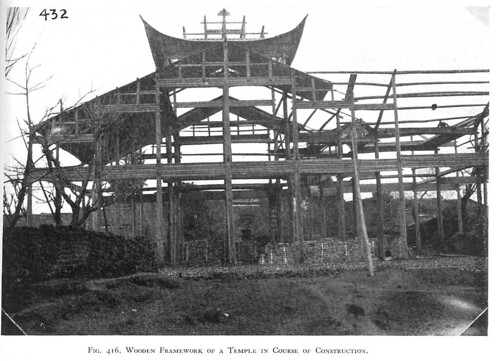I have been reading a really interesting book on Chinese tools. Well, actually the most interesting thing about it is the title:
Hommel, Rudolf P. China at Work; an Illustrated Record of the Primitive Industries of China’s Masses, Whose Life Is Toil, and Thus an Account of Chinese Civilization,1
You can’t get a much more orientalist sub-title than that. The author spent a lot of time in China between 1921 and 1930 and toured all over Central China photographing and describing Chinese tools. He seems to know a good deal about tools and making stuff, which means he occasionally makes interesting observations about the effectiveness of these tools and comparisons with versions in other countries.2
Here in honor of Gary Gygax is a crossbow trap

Hommel says that these were set for hunting tigers in Fujian, and it would seem to be a good plan to use something to kill tigers that would ensure that if it was just wounded you would not be in the vicinity. He is also impressed with the box-bellows and has a long section on plows. Actually the plow section is too short. He does not really deal with regional variations at all, (although he usually tells you where a picture comes from) and he seems to have made an effort to hunt down “primitive” ways of doing things which means there is nothing in here about how any “modern” changes were taking place. Still, a lot of it is cool, like this fire-wood hatchet with a little dongle at the end so you don’t dull the blade.

In general Hommel seems interested in things that shows how the ingenuity of the Chinese helps them to deal with their lack of resources,
 such as this hook for getting kindling-wood out of the top of a tree (China being deforested there is none lower down) with carrying basket so you can strap it to your back as you climb up.
such as this hook for getting kindling-wood out of the top of a tree (China being deforested there is none lower down) with carrying basket so you can strap it to your back as you climb up.

I liked the pictures of roof tiles being made. (I would have thought they were fired in roof-tile shape, but they are cut out of a cylinder)
and a picture of temples a-building. Apparently those massive beams inside are mostly for show, as at least in these pictures.

Very interesting. One comment: I’m having trouble envisioning how the dongle prevents the dulling of the blade. I get that it somehow stop the blade from cutting into whatever is beneath the wood, but I don’t get how it would work.
Ask and ye shall receive “R” According to Hommel
“Chopping the fire-wood into small pieces is done by women who crouch down with bent knees to do it. In place of a chopping block, they utilize the ground, the door-sill of stone or wood, the paving of the yard or street, it matters not the cutting edge is foolproof.”
Apparently if you chop level to the ground the bit at the end prevents the blade from going into the ground. This picture is from Shanghai, where I presume chopping wood on the door-sill or the road would be about your only option.